Samsung Unveils 2019 Notebook 9 Pen 13 & 15
by Anton Shilov on December 14, 2018 1:00 PM EST- Posted in
- Laptops
- Intel
- Samsung
- NVIDIA
- Notebooks
- Notebook 9
- Core 8th Gen
- Whiskey Lake
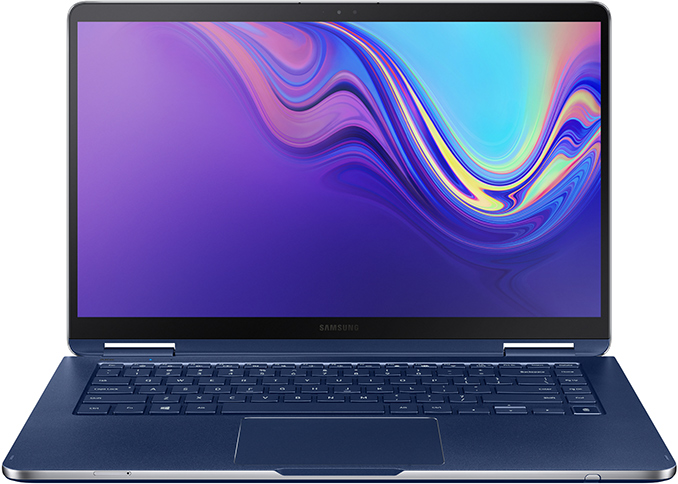
Samsung on Thursday introduced its next-generation Notebook 9 convertible laptops that will hit the market next year. The new lineup of convertibles includes models with a 13.3-inch display or a 15-inch display. These models and are aimed at professionals who need performance of Intel’s Core i7 CPUs along with convenience of a stylus in a relatively portable package. Also notable is that the new systems are the industry’s first PCs from a renowned brand to feature a UFS card reader.
Samsung’s Notebook 9 lineup of notebooks is well known and respected for its portability and moderate pricing. The company has been expanding this product family for quite a while now, introducing the Notebook 9 Pro in mid-2017, the Notebook 9 Pen in late 2017, and the Notebook 9 Spin convertibles somewhere along the line, creating some confusion. Since the “Pro” and the “Pen” have a lot in common, it looks like Samsung is going to merge these two lineups into one starting next year. Since the new Notebook 9 Pen hybrid laptops will have to address slightly different audiences, Samsung had to significantly alter design of its 13.3-inch Notebook 9 Pen convertible machine: the new one features a higher-capacity battery, but a bit thicker profile and a higher weight (15.9 mm, 1.12 kilograms).
Despite different display sizes (yet both featuring a Full-HD resolution) and overall dimensions (see the table below for exact numbers), the new Samsung Notebook 9 Pen 13 and Notebook 9 Pen 15 resemble each other a lot. Both systems come in a CNC-machined aluminum chassis with Ocean Blue finish.
The new units ship with Samsung’s new S Pen stylus that is stored inside the chassis, can sense 4,000 levels of pressure, has tilt sensitivity, and features a reduced latency when compared to the existing model. Perhaps, the most interesting feature of the tiny device is swappable tip for different types of work. Both machines are equipped with a 54 Wh battery that provides up to 15 hours of battery life on one charge in the best-case scenario.
Hardware wise, both Notebook 9 Pen systems are based on Intel’s 8th Gen Core i7 processor (think quad-core Whiskey Lake) accompanied by LPDDR3 memory, and a PCIe/NVMe SSD. The 13.3-inch model relies on Intel Graphics UHD 620 iGPU, whereas the 15-inch SKU has an NVIDIA’s GeForce MX150 discrete GPU paired with 2 GB of RAM for extra graphics oomph.
I/O capabilities are strong selling points of Samsung’s Notebook 9 Pen. The upcoming hybrid PCs from Samsung have a 802.11ac Wave 2 Wi-Fi + Bluetooth controller featuring Gigabit-class performance, two Thunderbolt 3 ports, a USB Type-C connector, stereo speakers co-developed with AKG, a microphone, a TRRS audio input/output, and a UFS + microSD card reader. The latter deserves a special attention as this is the first time when a renowned PC maker launches a laptop with a UFS card reader. Being the main driving force behind the UFS specification, Samsung yet has to support these high-performance cards on its other products and we can only wonder why the company has not done so thus far. In the meantime, the fact that Samsung’s new laptops have a UFS card reader may indicate that the company has plans to enable UFS support on other devices as well.
When it comes to security, Samsung’s Notebook 9 Pen systems are outfitted with a fingerprint reader along with an HD webcam featuring IR sensors for Windows Hello facial recognition.
| General Specifications of Samsung Notebook Notebook 9 Pen | ||||
| Notebook 9 Pen 13 (2018) |
Notebook 9 Pen 13 (2019) |
Notebook 9 Pen 15 (2019) |
||
| Launch | 2018 | 2019 | 2019 | |
| Display | Type | 13.3" RealViewTouch | 13.3" RealViewTouch (?) | 15.0" RealViewTouch (?) |
| Resolution | 1920×1080 | |||
| Brightness | Typical: 350 cd/m² Outdoor: 500 cd/m² |
? | ? | |
| CPU | 8th Gen Intel Core i7 (KBL-R) | 8th Gen Intel Core i7 (Whiskey Lake?) |
||
| Graphics | Intel UHD Graphics 630 (24 EUs) | Intel UHD Graphics 630 (24 EUs) | NVIDIA GeForce MX150 2 GB | |
| Memory | Up to 16 GB DDR4 | LPDDR3 | ||
| Storage | SSD | Up to 512 GB PCIe | PCIe/NVMe SSD | |
| Card | microSD card reader | UFS + microSD card reader | ||
| Wireless Connectivity | 2x2 802.11ac BT 4.1 |
2x2 802.11ac Wave 2 BT |
||
| Thunderbolt 3 | - | 2 × Thunderbolt 3 | ||
| USB | 1 × USB 3.0 Type-A 1 × USB 3.0 Type-C |
1 × USB 3.0 Type-C | ||
| Display Outputs | HDMI | DP 1.2 via TB3 | ||
| Webcam | 720p webcam with IR sensors | |||
| Battery | 39 Wh | 54 Wh | ||
| Audio | 2 × 1.5 W speakers 1 × microphone 1 × TRRS jack |
Stereo speakers with ThunderAmp 1 × microphone 1× TRRS jack |
||
| Dimensions | Width | 310.5 mm | 12.22" | 307.9 mm | 12.12" | 347.9 mm | 13.7" |
| Depth | 206.6 mm | 8.13" | 206.2 | 8.11" | 229.1 mm | 9" | |
| Thickness | 14.4 - 16.5 mm 0.56" - 0.65" |
14.9 - 15.9 0.58" - 0.63" |
16.9 mm 0.66" |
|
| Weight | 995 g | 2.19 lbs | 1.12 kg | 2.47 lbs | 1.56 kg | 3.44 lbs | |
Samsung plans to demonstrate the new Notebook 9 Pen machines next month at CES. Also at the show the company will disclose exact specs of the convertible notebooks as well as prices.
Related Reading
- Samsung Announces New Notebook 9 Pen and Three New Notebook 9 (2018) Laptops
- Samsung Announces Notebook 9 Pro 2-in-1, Includes S Pen Stylus
- Samsung Unveils Galaxy Book2: 12-Inch, Snapdragon 850 with X20 LTE, 20 Hrs
- Samsung Updates Notebook 9: Kaby Lake, USB-C, Starts at 816 Grams
- UFS - USB Bridge Controllers for Card Readers, Hosts Incoming from JMicron & SMI
- Samsung Rolls Out Its First UFS Cards: SSD Performance in Card Form-Factor
Source: Samsung
Samsung plans to demonstrate the new Notebook 9 Pen machines next month at CES. Also at the show the company will disclose exact specs of the convertible notebooks as well as prices.


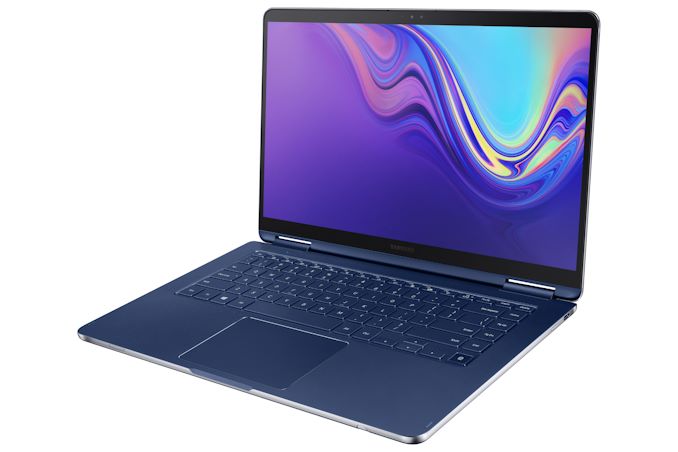
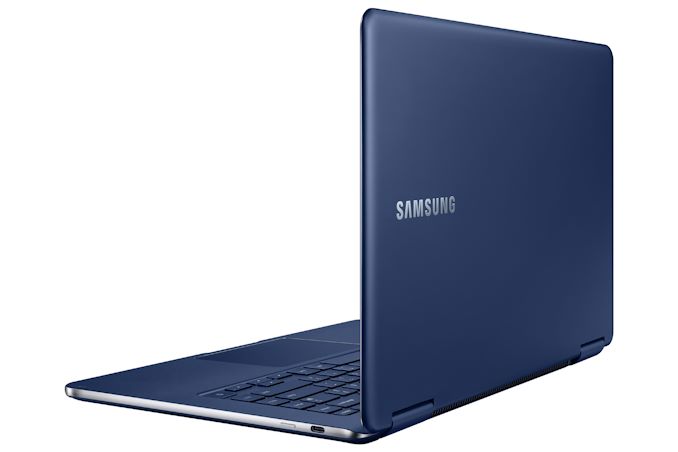

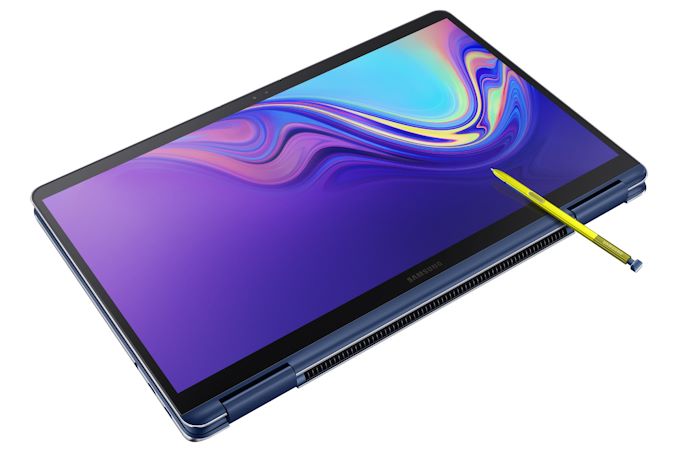
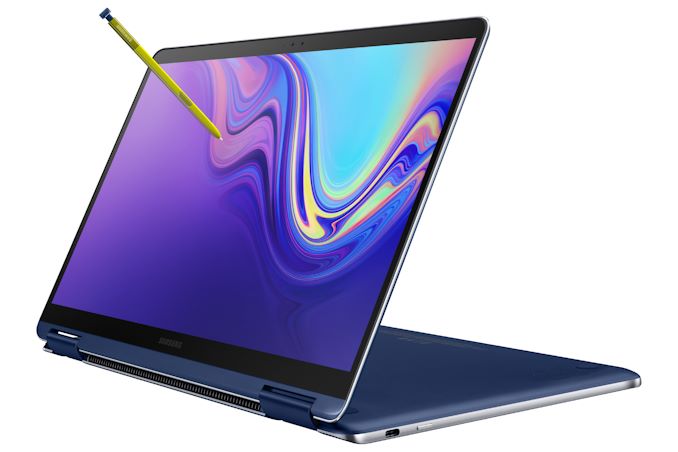














38 Comments
View All Comments
Ubiqutious - Friday, December 14, 2018 - link
Another model that won't come to Australia ? :(torchedguitar - Friday, December 14, 2018 - link
Wow, it's pretty far from April Fool's day -- did nobody raise an eyebrow that they're shipping a product in the U.S. named "PEN 15"?wrkingclass_hero - Friday, December 14, 2018 - link
Enjoy the 1080Pness of the PEN15Manch - Wednesday, December 19, 2018 - link
It will depend on how they package the PEN 15theuglyman0war - Tuesday, December 25, 2018 - link
well?When I buy in...
the CNC machined aluminum will presumably assure that my PEN15 remains hard in all use case scenarios!
I think I will like a shiny hard PEN15.
sorten - Friday, December 14, 2018 - link
2 x TB3 + USB-C?! I think I'm in love. Microsoft, are you paying attention?numberlen - Saturday, December 15, 2018 - link
Worse aspect ratio, resolution, and no USB Type A. What won't I give for this with Microsoft's panel.descendency - Saturday, December 15, 2018 - link
The problem with 3:2 is that it's great for a lot - but it is downright unusable for virtualization. VMWare Workstation, Virtual Box, and Hyper-V (made by MS) all do not even remotely support 3:2. I haven't tried any others (what others???). I don't understand why HyperV doesn't support MSs own flagship halo device...Type-C is far superior to having a god awful, useless Mini Display Port. Why did MS make such a backwards decision as this? Who uses that? Thunderbolt 3 is far superior. I can't fathom why they refuse to add this port. You're going to need a dongle for just about any use of MiniDP, so you might as well have a useful port like Thunderbolt... (I don't even really care about the Type-A, but I can see needing one)
KateH - Sunday, December 16, 2018 - link
miniDP peed in your cereal this morning? I totally agree that the lack of TB3 on the new Surface is a glaring omission (and I will be looking for TB3 on my next system) but realistically for the majority of users who just want to use an external display and don't care about eGPUs or ultra-high-performance external storage, they just buy a $10 cable on Amazon with one end that matches their PC and the other end that matches their display and that's the last they think about it. You don't really need dongles for video outputs anymore just a cable with heterogeneous connectors. mDP is def on it's way out but you make it sound like MS is forcing people to use CGA over a DB9 port or something! So vengeful towards that lil socket!GreenReaper - Monday, December 17, 2018 - link
I use miniDP. Admittedly, via a HDMI converter, ending up as DVI (it's an old monitor), but it's used.It would be nice to have more ports that do everything, but there is complexity and cost to that.